Hello! For this weeks looking outwards I decided to explore Olia Lialina’s online art gallery. Olia is an internet artist and experimental film producer. She was born in Moscow and studied film criticism and journalism in Moscow State University, then got an art residencey in Budapest and Munich. Olia’s online gallery linked below is a massive website that displays her art in different spots on the page. With a galaxy background, navigating through the website shifts you around the page to different pieces and categories. I really like this piece because it navigating through it really does feel like walking through a well-curated gallery. I think this is an awesome example of what art galleries can look like in the finite in order to reach more people through the internet.
Center of the UniverseCategory: LookingOutwards-09
LO 9: A Focus on Women and Non-binary Practitioners in Computational Art
Wendy Carlos is a pioneer of electronic music, particularly with her work from the late 1960s into the early 1980s. She studied physics and music at Brown University as well as Columbia University. Her work in developing new instruments led to the creation of the Moog synthesizer, which changed the way music was played and recorded dramatically. Her work is most prominently displayed in her album Switched on Bach as well as the scores for several movies: A Clockwork Orange, The Shining, and Tron. All of these pieces explored the emotional effects that the new timbre of computer music opened up. She also is a particularly important figure to study with the place of gender in technological fields. Although she privately began transitioning in 1966, she wasn’t able to publicly appear as a woman until 1972, after the commercial success of Switched on Bach.
LO: A Focus on Women and Non-binary Practitioners in Computational Art

For this assignment, I was excited to see a creator I was familiar with on the list: Angela Washko. Angela Washko is currently a visiting assistant professor of art here at CMU, but normally she’s based in NYC. Washko has received two degrees: a Bachelor of Fine Arts from Temple University and a Masters of Fine Arts from UC San Diego. Her work focuses on feminist perspectives, especially in media and video games. The project I’m particularly interested in is her All The Places You’ll Go (Women As Place). This is an “interactive hypertext point-and-click narrative adventure game” where the player explores different geographic locations by clicking. However, the geographic locations are described as women, derived from postcards of each place, described as “sights” to see. I am personally very interested in feminist topics, so this video game is one that I admire quite a bit. It’s witty, charming, and has a distinctly vintage feel, yet still feels very contemporary. It’s also a slightly unnerving experience where the women in these postcards gradually become more and more objectified, more part of the place, less like people at all the more you play. The entire thing feels very well done.
Angela Washko, All The Places You’ll Go (Women As Place), 2016, https://angelawashko.com/artwork/3907233-All-The-Places-You-ll-Go-Women-As-Place.html
LO 9
Asking the Neural Network to Imagine a Chimera
Ex.icon
This project consists of a combination of text, AI generated images, and screenshots that work together to explore the idea of a chimera. It is a sort of back and forth between human and machine that interrogates the differences between human perception and machine perception and the opportunities that either offer for imagination and also interrogation of the existing repertoire of ideas and images. I find this combination of written theory and imagery particularly compelling because unlike many artworks this allows the viewer to follow the thought process of the artist in a much more direct way. The text situates the images in the context of the thought process rather than assuming that the viewer has all of the prerequisite knowledge to know how to interpret them. This particular artist has very little information about them online so it is not really possible to do a comprehensive biography. However, their artist statement tells us that their work uses various forms of play to decode the mythology of dualisms built into society, and interrogate human existence within late capitalism and technology. They work across many mediums, but much of the work seems to be related to experience within digital spaces.
Artist Website:
Project:
LO 09: Women and Non-binary Practitioners in Computational Art
Sputniko! is a Japanese/British Artist based in Tokyo. She creates film and multimedia installations which explore the social, cultural, and ethical implications of emerging technologies. She’s an Associate Professor of Design at Tokyo University of Arts. She gave a Ted Talk in TED 2019 and was selected as one of the Young Global Leaders by the World Economic Forum. One project of hers that I’m really intrigued by is “Red String of Fate – Tamaki’s Crush.” The red string of fate is a myth in which gods tie an invisible red string between soulmates. Sputniko! collaborated with scientists from NIAS to genetically engineer silkworms to spin the red string of fate by inserting genes that produce oxytocin (the social-bonding “love” hormone), and the genes of red-glowing coral into silkworm eggs. The film that accompanies the project centers around Tamaki, an aspiring genetic engineer, who makes her own red string of fate in the hopes of winning over another scientist, Sachihiko. She sews the red silk into her favorite scarf, but it’s so powerful that everyone starts to fall in love with her – everyone except Sachihiko.
https://sputniko.com/Red-Silk-of-Fate
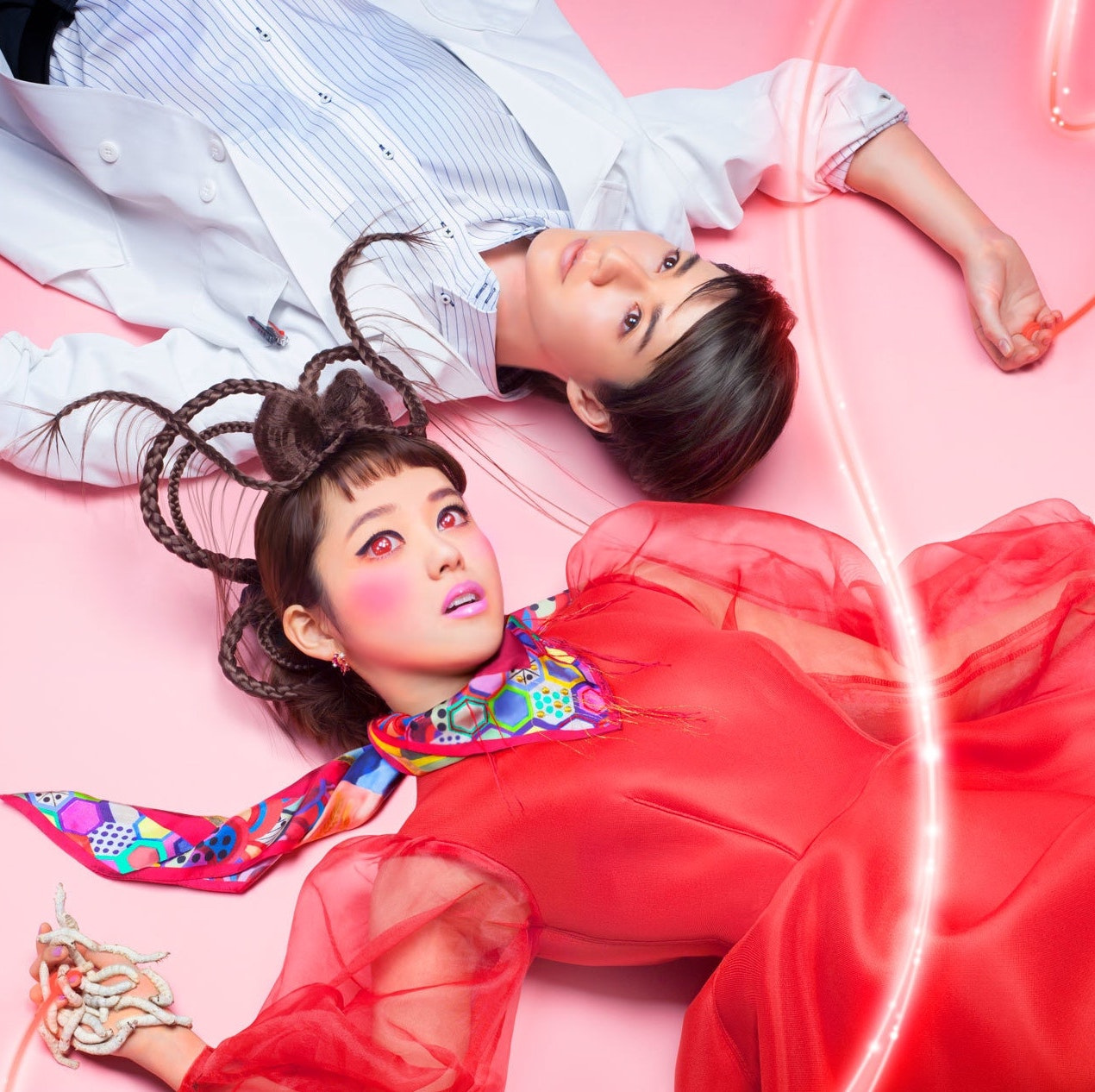
Looking Outwards 09: A Focus on Women and Non-binary Practitioners in Computational Art
This week I decided to look into Caroline Sinders, a machine-learning-design researcher and artist. Her work in recent years has been focused on examining the intersections of technology’s impact in society, interface design, AI, abuse, and politics in digital/conversational spaces. She also is the founder of Convocation Design + Research where they explore and study the intersections of machine learning, user research, and designing for the public good. I wanted to focus on her project “Higher Resolutions” in 2019, a project mainly centered around the state of power and privacy online. They use interactive art installations as well as talks from professionals in the field to educate their audience members about the topic. Some art installations within the space include facial recognition, website tracking, and harmful content recommendation algorithms. Participants can also vote on a feature to ban and view the floor schematic at a closer level. I found her work interesting because I am also working on a data security and privacy research project in my design research class. I found it refreshing to see someone else’s perspective and approach to the problem space.
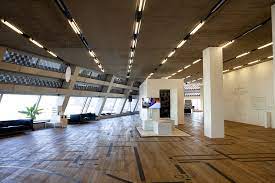
LO9
Link of the :https://www.novajiang.com/projects/cacophony/
This week I looked at Nova Jiang’s interactive sculpture: Cacophony, created in 2020. Cacophony is a crystal sculpture which gives physical form to the sound of an orchestra tuning. It is generated from a recording of the Sacramento Philharmonic tuning before a performance of Stravinsky’s The Firebird. The media involved are steel, aluminum, Swarovski crystals, and lexan. It is a huge sculpture, having the dimensions of 35’ x 5’ x 5’. It presents cacophony of the opera tuning, but is also harmonic because of the crystal texture and the beautiful look. The shape of the audio is also beautiful. The artist studied in Skowhegan School of Painting and Sculpture in 2009, completed master degree in University of California, Los Angeles, Department of Design Media Arts in 2009, completed bachelor degree of fine arts in University of Auckland, Elam School of Fine Arts in 2007. She mostly do interactive sculptures and paintings. She now lives in LA.
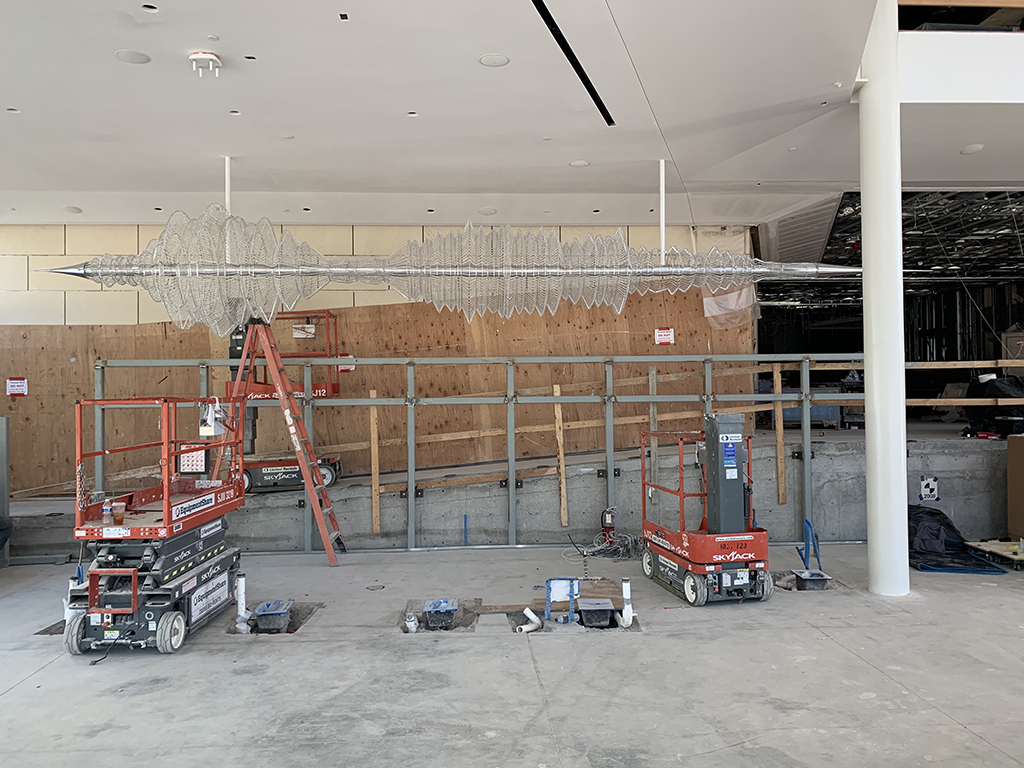
Looking Outwards – 09
I decided to look into Angela Washko and her work in feminist and alternative video games.
“The Game: The Game” is a fresh take on dating sims, as the player goes through the experience of seduction as a femme-presenting individual.
Along with the traditional dating sim mechanics, this game also provides commentary on politics, tactics and practices of the male pick-up strategies.
It creates empathy or a sense of understanding among people in these specific and hyper-gendered social situations.
I’ve always thought of video games as a platform of expression, but I hadn’t considered political or social commentary to be a particularly prominent aspect.
However, Washko and her work has brought this element into the forefront of my attention, and I will continue to look for more meaningful avenues that video games may promote in the future.
More generally, Washko’s work takes on a specific angle in interdisciplinary art, combining aspects of performance, mainstream media, digital art, cinematography and video games.
She’s a Associate Professor of Art at CMU and primarily works with the MFA program.
https://angelawashko.com/section/437138-The-Game-The-Game.html
Looking Outwards 09: A Focus on Women and Non-binary Practitioners in Computational Art
Project Title: Revealing the hidden emotional data contained in videos of U.S. Presidential speeches
Artists: Kim Rees
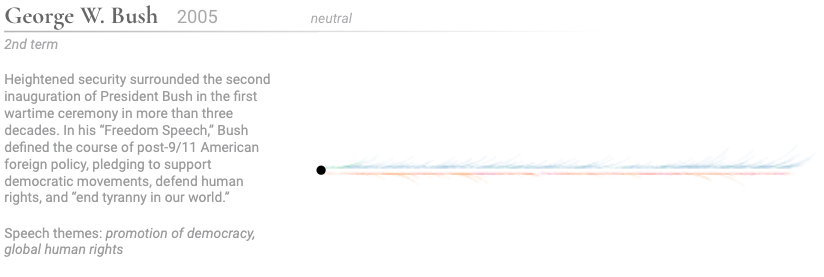
The creators first used the Microsoft Emotion API and then pulled out the second-ranked emotion for each event where ‘neutral’ was first-ranked. I admire the universality of this project, as they chose to focus on emotions that are understood cross-culturally (happiness, fear, etc); I admire this project because it enables even more people to connect with the data in a meaningful way and also takes what some don’t often immediately relate with distinct feelings (besides perhaps hope and pride) and connects the two. I admire how they compared inaugural addresses, not just focusing on one president. I admire this because it’s fascinating to see how some speak with such intensity, which is represented by the length of each barb, and it got me thinking about the speeches I’ve listened to and if I find such information representations to align with my perspective. Rees studied computer science. Rees co-founded Periscopic, which is a data-visualization company and worked there for over a decade. Broadly speaking, Rees focuses on human-centered data and she helped companies and organizations promote information transparency and public awareness by telling their data stories and matching algorithms to values.
LO-09
I chose to look at Camille Utterback, who focuses on interactive artworks and permanent public installations, I focused on the project Precarious
Precarious was created for the National Portrait Gallery exhibition Black Out: Silhouettes Then and Now, which opened in May, 2018. Precarious is an interactive installation that extends the historical practice of tracing human silhouettes with a mechanical apparatus on a backlit screen, by instead “tracing” gallery visitors with contemporary digital tools. Utterback uses a ceiling mounted depth camera to record peoples’ silhouettes as seen from above. Her software then continually interprets and redraws this data, rendering the silhouettes not with the stark fixedness of paper cut outs, but as tremulous outlines of bodies moving through time. The painterly aesthetic of Precarious builds on the algorithmically generated visual language which Utterback has refined over many years via her custom coded interactive drawing systems.
In the Precarious system, silhouettes are never fixed. As Utterback’s software draws peoples’ outlines, each line is translated into a series of points. The points are programmed to exert an animating force on the other points, which generates ongoing momentum in the continually redrawn forms.
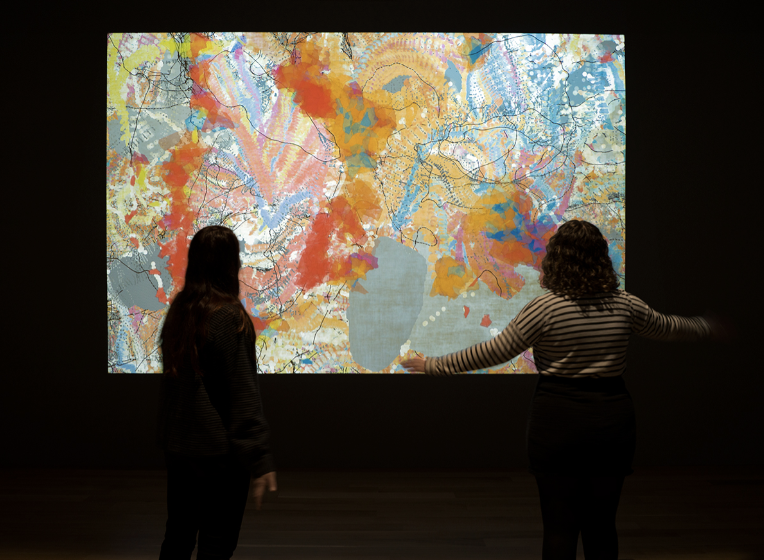
![[OLD SEMESTER] 15-104 • Introduction to Computing for Creative Practice](https://courses.ideate.cmu.edu/15-104/f2021/wp-content/uploads/2023/09/stop-banner.png)